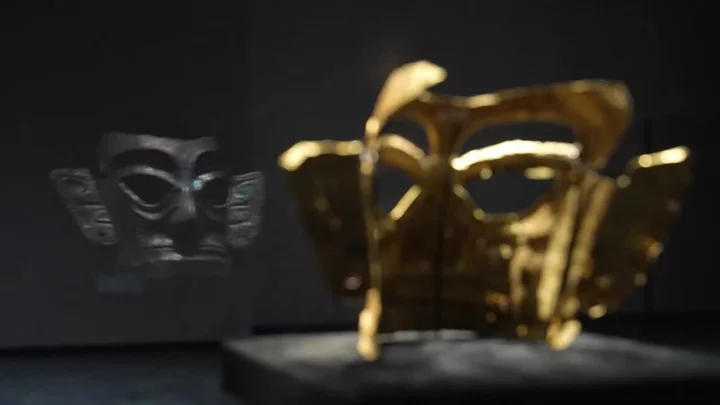
Archaeologists have just found a rare 18th-century cold bath
Archaeologists have found a rare cold bath below the 18th-century Bath Assembly Rooms. The rooms, completed in 1771, were fashionable places of entertainment, conversation, dancing and gambling and cold baths were seen as good for people's health. The cold bath is in the centre of a suite of three rooms beneath one end of the ballroom. It has dressing rooms on either side. The excavation involved removing a later floor that had been installed over the cold bath and removing tonnes of rubble to reveal steps down into it. Bruce Eaton, of Wessex Archaeology, which oversaw the excavation, told the Guardian: “Although historical records indicated that there was a cold bath buried beneath the Bath Assembly Rooms, we had no idea what preservation of the bath would be like. “The building suffered damage at the hands of the Luftwaffe and the rooms were remodelled in the late 20th century but, after carefully excavating tonnes of concrete and rubble, we saw the original structure emerge in its entirety. “It’s tremendous to be able to piece together this rare archaeological evidence of an 18th-century cold bath with social historical accounts from the time.” Tatjana LeBoff, a project curator at the National Trust, said: “The cold bath at the assembly rooms is highly unusual. It is a rare, if not unique, surviving example, and possibly it was the only one ever built in an assembly room.” The trust was researching records, letters, diaries and other documents to discover more about the cold bath, she said. Sign up to our free Indy100 weekly newsletter Have your say in our news democracy. Click the upvote icon at the top of the page to help raise this article through the indy100 rankings.
2023-10-09 16:46

New discovery of rogue planets defies scientific theory and leaves experts baffled
Planet-like objects in the Orion Nebula have been revealed for the first time in images from the James Webb Space Telescope. The Orion Nebula, one of the brightest nebulae in the night sky, has long presented astronomers with an abundance of celestial objects to study. It is identifiable as the sword in the Orion constellation and is located 1,300 light-years from Earth. Astronomers managed to discover unprecedented details by capturing mosaics of the Orion Nebula in short and long wavelengths of light. Whilst searching for low-mass objects, astronomers Samuel G. Pearson - a European Space Agency research fellow at the European Space Research and Technology Centre in the Netherlands - and Mark J. McCaughrean - senior adviser for science and exploration at the European Space Agency - came across something they had never before seen. Their discovery appears to defy some fundamental astronomical theories: pairs of planet-like objects with masses between 0.6 and 13 times the mass of Jupiter. They have been dubbed Jupiter Mass Binary Objects, or JuMBOs. "Although some of them are more massive than the planet Jupiter, they will be roughly the same size and only slightly large," said Pearson. The astronomers found 40 pairs of JuMBOs, and although they exist in pairs, the objects are typically about 200 astronomical units apart, or 200 times the distance between Earth and the sun. This means it can take between 20,000 and 80,000 years for the objects to complete an orbit around each other. McCaughrean and Pearson have written two research papers based on their discoveries in the Orion Nebula. The preliminary findings are available on a preprint site called arXiv whilst the studies have been submitted to academic journals for publication. But many questions about JuMBOs remain. "Scientists have been working on theories and models of star and planet formation for decades, but none of them have ever predicted that we would find pairs of super low mass objects floating alone in space - and we're seeing lots of them," Pearson said. "The main that we learn for this is that there is something fundamentally wrong with either our understanding of planet formation, star formation, or both." Sign up to our free Indy100 weekly newsletter Have your say in our news democracy. Click the upvote icon at the top of the page to help raise this article through the indy100 rankings.
2023-10-08 21:17
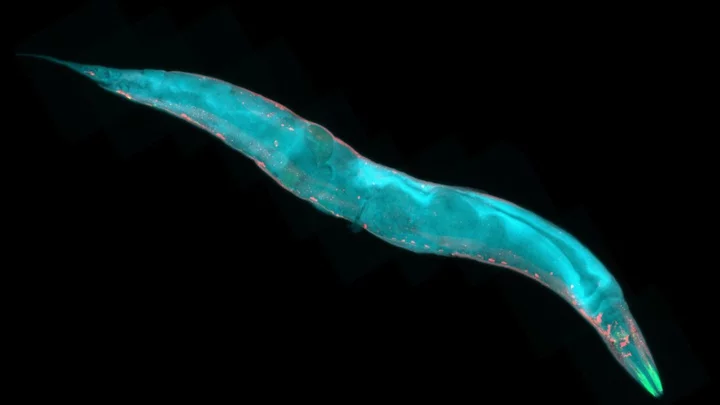
Study suggests even basic worms can experience human-like emotions
Everybody hurts sometimes – even the most basic worms in the animal kingdom which have no eyes, spine or brain. That’s what scientists have found out about nematode species Caenorhabditis elegans, which possesses basic emotions such as fear. Researchers zapped the worms to see if they would display negative reactions, and the worms continued to “flee” at high speeds for minutes after. The scientists at Nagoya City University in Japan and Northeastern University in the US said the response shows a brain state which is comparable to fear in humans. "These properties have been recently regarded as essential features of emotion, suggesting that C. elegans response to electric shock may reflect a form of emotion, akin to fear," the researchers wrote. The findings are the most recent in a debate over which animals can experience primitive versions of our own emotions. Crayfish and bumblebees have all shown animals can have lasting positive and negative mental states. C. elegans is one of the most basic worms in the animal kingdom. At about 1mm in length it is also tiny and transparent, with no brain, sight or smell. Nonetheless, worms which sensed an electric current for 45 seconds “ran away” for more than two minutes. During this state, they ignored food which was placed nearby, instead scurrying at high speeds. This suggests that the emotional response could be triggered by different stimuli and that one stimulus could inhibit responses to others. When the shock was just five seconds long, the worms fled for a minute and a half before calming down. And when the researchers repeated the experiments with worms that were not to produce neuropeptides – which are the equivalent to human hormones – the worms stayed in a state of fear for longer. "Because the requirement of neuropeptide signaling [in worms] is reminiscent of neuropeptide regulation of fear in mammals including humans, the fear-like brain state may be regulated by evolutionarily conserved molecular mechanisms," the authors of the study wrote. Sign up to our free Indy100 weekly newsletter Have your say in our news democracy. Click the upvote icon at the top of the page to help raise this article through the indy100 rankings.
2023-10-08 18:28

5 times celebrities have spoken out against AI deepfakes
Deepfakes are becoming an increasing concern online with many celebrities and influencers' faces fronting fake scams – and in more sinister cases, NSFW material. For the blissfully unaware, a deepfake is a digitally altered piece of content, often without concern. They're often used with malicious intent for financial gain or to spread false information. The surge in deepfakes has prompted many high profilers to come forward and speak out including MrBeast and Tom Hanks: Martin Lewis The nation's favourite money-saving expert issued a warning over a "disgraceful" scam that could lead vulnerable people to lose money. Lewis said people are using the technology to "pervert and destroy" his reputation to scam people. An advert, which circulated online earlier this year, appeared to show Lewis endorsing an Elon Musk-backed investment scheme. "Musk’s new project opens up new opportunities for British citizens. No project has ever given such opportunities to residents of the country," the AI version of Lewis says in the footage. The real Lewis later told the BBC "it's pretty frightening." He continued: "These people are trying to pervert and destroy my reputation in order to steal money off vulnerable people, and frankly, it is disgraceful, and people are going to lose money and people’s mental health are going to be affected." MrBeast The popular YouTuber took to X/Twitter to address a deepfake video that went viral online. "Lots of people are getting this deepfake scam ad of me… are social media platforms ready to handle the rise of AI deepfakes? This is a serious problem," he posted to the platform. MrBeast included a clip that has been circulating online, that shows an AI version of him saying he's giving away iPhones. "You’re one of the 10,000 lucky people who will get an iPhone 15 pro for just $2," the deceiving clip said. "I’m MrBeast and I am doing the world’s largest iPhone 15 giveaway." Tom Hanks Hanks was forced to issue a warning over a deepfake advert promoting a dental plan using his presence. In a post to Instagram, Hank shared a screenshot of the ad, with overlaid text reading: "BEWARE!! There’s a video out there promoting some dental plan with an AI version of me. I have nothing to do with it." Nicki Minaj In a much lighter incident, the rapper was featured in ITV's Deep Fake Neighbour Wars. The programme showed an AI version of Minaj and her 'husband,' Tom Holland. Upon arriving home from their honeymoon, they found an intruder in their living room, Mark Zuckerberg. It plays on an internet rumour that joked Minaj and Holland were dating and expecting a baby in 2019. At the time, the actor joked to Esquire: "This actually really stressed me out... and then I realised I've never met Nicki Minaj. So that was a big relief for me because I'm not ready to have kids." She wrote: "HELP!!! What in the AI shapeshifting cloning conspiracy theory is this?!?!! I hope the whole internet get deleted!!!" Streamer Sweet Anita Meanwhile, popular streamer Sweet Anita was horrified to learn she was targeted by deepfake porn without her consent. "It has all the same consequences of revenge porn, and so now I will be living those consequences for a choice I never made," Sweet Anita told ITV. The streamer said the situation has made her "tired" and heightened her security fears. Sign up for our free Indy100 weekly newsletter Have your say in our news democracy. Click the upvote icon at the top of the page to help raise this article through the indy100 rankings.
2023-10-08 17:19

Scholar dedicated his career to arguing that Jesus was a hallucinogenic mushroom
Since the 1960s, one scholar has dedicated his career to arguing that Jesus was not a living man, but in fact a mushroom. John Marco Allegro was one of the first scholars permitted to decipher the ancient documents now known as the Dead Sea Scrolls, that were discovered in 1947 in the Judean Desert. They contained the oldest surviving versions of books that would later be incorporated into the biblical canon. Allegro and his colleagues were the first to go about making sense of the documents, as they were obviously discovered untranslated, eventually publishing the texts after hard work and disagreements. Allegro then went on to write two more books on the subject in 1958, The Dead Sea Scrolls and The People of the Dead Sea Scrolls, which remain extremely influential. Then in 1970 and again in 1979, Allegro published two more books. These expanded on his idea that Christianity was a cover for a secret cryptic sex cult generated by people under the influence of Amanita muscaria, more commonly known as Fly agaric. And that Jesus was a metaphor for the fungus and its influences. Using etymology, Allegro argued that early Christianity was created by an Essene cult that recorded their practices through the texts of the New Testament. And that evangelists misunderstood the text's true meaning when they transcribed it. There was never a man called Jesus, only a cult that used mushrooms to have hallucinations. He also argued that the God of the Old Testament was "a mighty penis in the heavens who in a thunderous climax of the storm ejaculated semen upon the furrows of Mother Earth." Allegro's views were not well received, with some believing he created the argument as revenge against Christian critics who dismissed his earlier translations of the Dead Sea Scrolls, whilst some believed he just ran away with the wrong idea. Sign up to our free Indy100 weekly newsletter Have your say in our news democracy. Click the upvote icon at the top of the page to help raise this article through the indy100 rankings.
2023-10-08 00:21
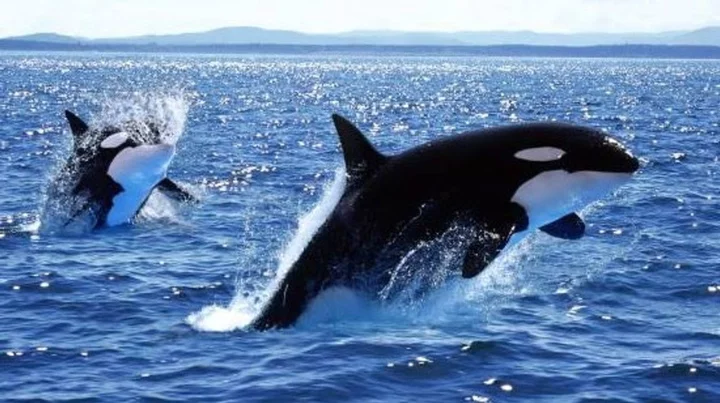
Orcas have been bullying porpoises for years – and scientists are baffled
An orcas diet consists of Chinook salmon and can eat up to two dozen fish a day - so why is it that the killer whales like to bully porpoises despite them not being part of their diet? That's the question which has left scientists scratching their heads, as the study published in Marine Mammal Science seeks to add further understanding to this subject. Around 78 cases of orcas targeting porpoises were noted by researchers from the UK, USA and Canada. It was said to be happening in the Salish Sea (located in the Canadian province of British Columbia and the U.S. state of Washington). Some of the orcas' bullying tactics include pushing the porpoise along with their nose, holding the porpoise in their mouth, balancing the porpoise above water, slapping the porpoise with their tail, and raking the porpoise with their teeth, according to Science Alert. Killer whales also use porpoises as playthings as they catch them before letting them and proceeding to chase them once more - and they even play toss them around in a 'pass the porpoise' game, say whale watchers. That's some textbook tormenting. Out of these sightings, 28 of them have ended in the harbour porpoise (Phocoena phocoena) or a Dall's porpoise being suspected to have been killed, though there's no record of the porpoises being eaten by the orcas. In terms of size, the porpoise is said to be fairly small being a similar size to a Chinook salmon - a large fish species that can grow up to 1.5 meters (5 feet). There are three theories that have been considered by the experts. Firstly, the bullying is all about creating coordination, and cohesion within the group of orcas, or alternatively that the orcas do this as a form of hunting practice. The final theory is that orcas could be trying to look after weak porpoises as if they were their own aka 'displaced epimeletic behaviour.' This mismothering behaviour – also known as 'displaced epimeletic behaviour' to scientists – might be due to their limited opportunities to look after youngsters as the stat shows. "Our research has shown that due to malnutrition, nearly 70 per cent of Southern Resident killer whale pregnancies have resulted in miscarriages or calves that died right away after birth." It seems that orcas are not the only bullies of the seas, as smaller dolphins e.g. bottlenose have similarly been seen harassing and killing for no clear reason. Sign up to our free Indy100 weekly newsletter Have your say in our news democracy. Click the upvote icon at the top of the page to help raise this article through the indy100 rankings.
2023-10-07 15:57

Woman says she was forced to change her name after Apple's latest system update
A new update has meant that Apple users can now say just "Siri" instead of "Hey Siri", but this modification has proven troublesome for one woman who has had to change her name as a result. Siri Price, a 26-year-old personal trainer from Edinburgh is used to having the same name as Apple's voice-activated digital assistant. While Apple's Siri stands for “Speech Interpretation and Recognition Interface," the name Siri is also Old Norse and apparently means “beautiful woman who leads you to victory". Since sharing the same name, the old version of the voice assistant would be triggered by saying the words "Hey Siri". “I work in a gym with a lot of people around so everyone learned quite quickly not to say ‘Hey’ when they greet me or there would be a lot of bleeping going on," she told The Sun. “It was annoying but manageable." But now this command is just "Siri," for the voice to be activated so it means people cannot say Siri's name without causing the voice feature to activate on their phones. As you can imagine, Siri is pretty annoyed with this new update. "Now people can’t even say my name. I’m absolutely fuming," she said. "My workmates had to sit down and think of a workaround because people’s phones have been going off non-stop." Consequently, it means Siri has had to come up with a different name for herself - Siz. “I’m sure Apple could have picked something else instead — there’s plenty of people called Siri and their lives have become just unbearable because of this," Siz added. Although Siz is not alone as those with the name Alexa possibly have similar feelings as their name is also the name of Amazon's virtual assistant. When this happened, it resulted in the name dramatically declining in popularity - perhaps due to parents releasing their child may have the same problem as Siri's. Something for tech companies to keep in mind when they're naming their voice assistants... Sign up to our free Indy100 weekly newsletter Have your say in our news democracy. Click the upvote icon at the top of the page to help raise this article through the indy100 rankings.
2023-10-06 21:22

Scientists are using AI to develop simple test to search planets for alien life
Scientists are using AI to search planets for alien life. Researchers writing in the Proceedings of the National Academy of Sciences say artificial intelligence can determine with 90 per cent accuracy whether a sample from another planet is biological or not. Scientists hope that their test could be used on samples already collected by the Mars Curiosity rover’s Sample Analysis at Mars (SAM) instrument. The findings could also help tell us more about our own planet, revealing the history of mysterious and ancient rocks found on Earth. “The search for extraterrestrial life remains one of the most tantalizing endeavors in modern science,” said lead author Jim Cleaves of the Earth and Planets Laboratory, Carnegie Institution for Science, Washington, DC. “The implications of this new research are many, but there are three big takeaways: First, at some deep level, biochemistry differs from abiotic organic chemistry; second, we can look at Mars and ancient Earth samples to tell if they were once alive; and third, it is likely this new method could distinguish alternative biospheres from those of Earth, with significant implications for future astrobiology missions.” The technique was built by giving an artificial intelligent system data about 134 known samples, with information about whether they are biotic or abiotic. To test it, it was then given new samples – including those from living things, remnants of ancient life and other abiotic samples that did not point to life, such as pure chemicals. The system also started predicting another kind of sample type, dividing the biotic ones into “living” and “fossils”. That means it could tell the difference between a freshly harvested leaf and something else that died long ago, for instance. In the future, the technology could become even more advanced and detect other aspects of life. “This routine analytical method has the potential to revolutionize the search for extraterrestrial life and deepen our understanding of both the origin and chemistry of the earliest life on Earth,” said Robert Hazen, of the Carnegie Institution for Science, one of the leaders of the research. “It opens the way to using smart sensors on robotic spacecraft, landers and rovers to search for signs of life before the samples return to Earth.” Sign up to our free Indy100 weekly newsletter Have your say in our news democracy. Click the upvote icon at the top of the page to help raise this article through the indy100 rankings.
2023-10-06 20:49
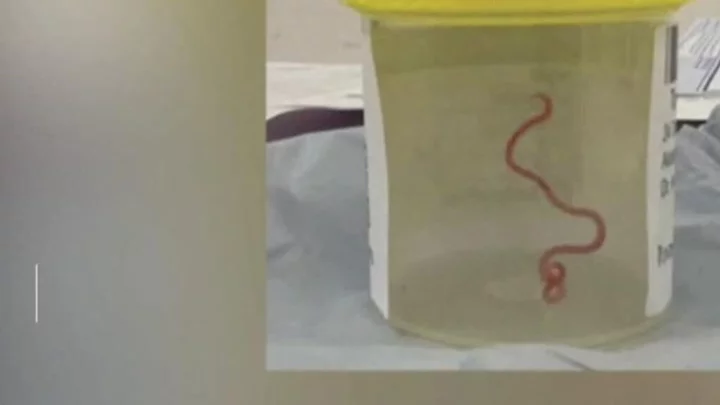
Scientists solve 5-year mystery of tiny unidentified 'sea creature'
Scientists have got to the bottom of a 5-year mystery after finally identifying a tiny sea creature captured on camera in 2018. It is the latest in a series of oceanic discoveries and experts recently observed “zombie worms” devour an alligator in an incredible experiment. For the tiny creature, the baffling question of its identity took a team of zoologists and parasitic worm specialists to solve after the small creature was pictured by an underwater photographer in 2018 off the coast of Okinawa in Japan. After photographer Ryo Minemizu captured the image, he shared it on social media asking the hive mind if they knew what the creature was, but everyone was left stumped. Minemizu was determined not to give up and instead went back to the area and was able to capture another ladybird-sized creature that was the same, or very similar, to the original one he had come across. The research team that was interested in identifying the sea creature approached him and Minemizu sent them the sample to research. Your browser does not support the video tag. Current Biology (2023) The team’s results were published in the Current Biology journal putting an end to the 5-year long mystery baffling experts. In a fascinating twist, the team found that the sample was not one, but two creatures that were clinging tightly to one another. Both were identified as types of cercariae parasitic larvae worms, with experts dubbing one as the “sailor” and the other as a “passenger” thanks to how they behave when they are connected. Passengers were much smaller than the sailors and when they were bonded together, they formed a flat-topped hemisphere shape. They squeeze their bodies together with heads facing the inside of the sphere, meanwhile, their tails latch onto one another. Experts believe the two individual creatures have created a colonial organism that suits both of their needs and according to the study's authors, “represents the first case of labor division in digenean larvae”. Sign up to our free Indy100 weekly newsletter Have your say in our news democracy. Click the upvote icon at the top of the page to help raise this article through the indy100 rankings.
2023-10-05 23:24

Scientists weren't expecting what they found when they opened up the Bennu asteroid capsule
In late September, scientists at NASA and around the world eagerly awaited the arrival of the OSIRIS-REx capsule containing a sample of the asteroid Bennu. The capsule safely landed on Earth on Sunday 24 September in a Utah desert containing a sample of the asteroid Bennu – categorised as one of the two “most hazardous known asteroids”. When the capsule was first opened, it sparked audible gasps from scientists. Since its arrival, NASA has kept its cards fairly close to its chest but a new blog post from the space agency suggests that progress is going slowly for the “best reason” as there is more sample material than they had anticipated. They explained: “The abundance of material found when the science canister lid was removed earlier this week has meant that the process of disassembling the TAGSAM (Touch-and-Go Sample Acquisition Mechanism) head – which holds the bulk of material from the asteroid – is off to a methodical start.” The OSIRIS-REx’s mission took 7 years to complete, with the sample currently being analysed by NASA taken three years ago before making its way down to Earth. Imagery from the moment the sample was taken confirmed to scientists that there would be asteroid material where they found it, but the quantity of dark particles were far more than they had anticipated. “The very best ‘problem’ to have is that there is so much material, it’s taking longer than we expected to collect it,” said deputy OSIRIS-REx curation lead Christopher Snead of NASA’s Johnson Space Center. “There’s a lot of abundant material outside the TAGSAM head that’s interesting in its own right. It’s really spectacular to have all that material there.” In the coming weeks, experts will continue to work through the particles and begin the complex process of carefully disassembling the TAGSAM to reach the bulk of the Bennu sample inside. Sign up to our free Indy100 weekly newsletter Have your say in our news democracy. Click the upvote icon at the top of the page to help raise this article through the indy100 rankings.
2023-10-05 22:48
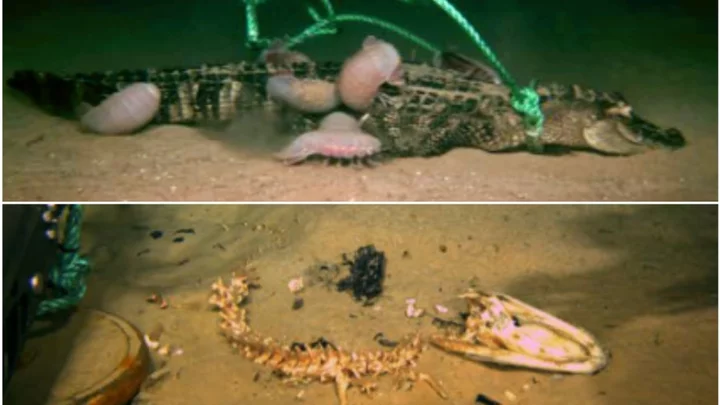
Monstrous 'zombie worms' devour alligator in jaw-dropping experiment
A warning to readers who don’t have a fear of the deep ocean: this story might soon change that. Back in 2019, a group of researchers who wanted to stir excitement down in the murky recesses of the sea conducted a unique experiment. The team, from the Louisiana Universities Marine Consortium (LUMCON), dropped three dead alligators 6,560 feet (2,000 metres) down into the Gulf of Mexico to see how deep-dwelling creatures would react to an uncommon food source. Initially, the scientists thought that the tough hide of the reptiles would put scavengers off, because it would make it hard for them to reach the more desirable soft flesh. However, this swiftly proved to be far from the case. Within a day, nine large isopods (Bathynomus giganteus) were observed feasting on the first carcass, eventually penetrating its hide and eating their meal from the inside out – imagine a crew of foot-long, pink woodlice crawling all over a gator and you get the picture. The second croc, dropped around 100km away, was almost totally devoured in just 51 days – leaving behind nothing more than its skull, spine, and the rope and weight that were used to anchor it to the sea floor. The scant leftovers became a source of great excitement to the researchers when they noticed it had been targeted by a brand new species of bone-eating worm. They concluded that it appeared to be a member of the Osedax family – commonly known as "zombie worms" because they suck away at, and live off, the bones of the dead – which had never been seen around Mexico before. Testing revealed that its nearest identifiable relatives are native to Antarctica and California, therefore making it an “undescribed species”. The investigators wrote in a paper about their discovery, which was published in the journal PLOS, that the creature “will be named in due course”. So, what happened to the third alligator? Well, that part is a mystery, because within eight days of its drop-off at its 1,996-metre-deep observation spot, it had disappeared. The researchers noted that although the body had vanished, the 20.4kg anchor, shackle and rope used to weigh the animal down were found 8.3 metres away – suggesting they had been “dragged” there. The experts concluded that a “large scavenger” had most likely snapped up the reptile. And given the depth at which it had been left, and the “implied body size necessary to both consume a moderately-sized alligator and move a large weight” it was probably a large shark. Clearly, whatever the beast was, it didn’t feel like sharing its dinner with a bunch of greedy worms. Sign up for our free Indy100 weekly newsletter Have your say in our news democracy. Click the upvote icon at the top of the page to help raise this article through the indy100 rankings.
2023-10-05 21:58
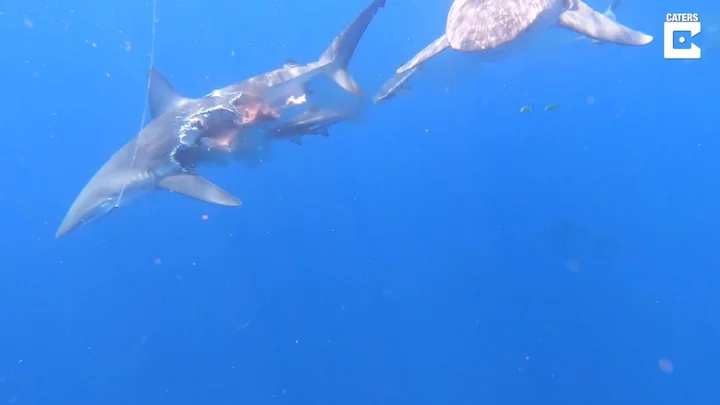
Scientists make creepy discovery about ancient cannibal rituals
A stark new discovery has revealed that cannibalism was a common practice in Europe to commemorate the dead 15,000 years ago. Research from London’s Natural History Museum (NHM) found human remains at a famed Paleolithic site in Cheddar Gorge that appeared to have bite marks across 100 of the bones. Scientists believe this is sufficient evidence of cannibalism in the Magdalenian group. "We interpret the archaeological evidence that cannibalism was practised on multiple occasions across northwest Europe over a short period of time as an indication that such behaviour was part of a funerary behaviour among Magdalenian groups, and not simply practised out of necessity," Dr Silvia Bello, paleoanthropologist and principal researcher said in a statement. Postdoctoral researcher William Marsh went on to say that the study contextualised the area by reviewing all sites "attributed to the Magdalenian culture." "During the terminal time period of the Palaeolithic, you actually see a turnover in both genetic ancestry and funerary behaviour, indicative of population replacement as Epigravettian groups migrated northwards," he said, as per IFL Science. "We believe that the change in funerary behaviour identified here is an example of demic diffusion where essentially one population comes in and replaces another population and that brings about a change in behaviour." Fast forward to 2023, and now people are having their bodies frozen in hopes they can "wake up" in the future. Cryonics "is the practice of preserving humans and animals at cryogenic temperatures in the hope that future science can restore them to a healthy living condition as well as rejuvenate them," according to the National Library of Medicine. "At present cryonics can only be performed after pronouncement of legal death of the cryonics subject." Sign up for our free Indy100 weekly newsletter Have your say in our news democracy. Click the upvote icon at the top of the page to help raise this article through the indy100 rankings.
2023-10-05 21:18
